How to Cook Lentils (3 easy steps!)
Lentils are a fantastic ingredient – they’re cheap, tasty, and super versatile. Here’s how to cook lentils, in 3 easy steps!
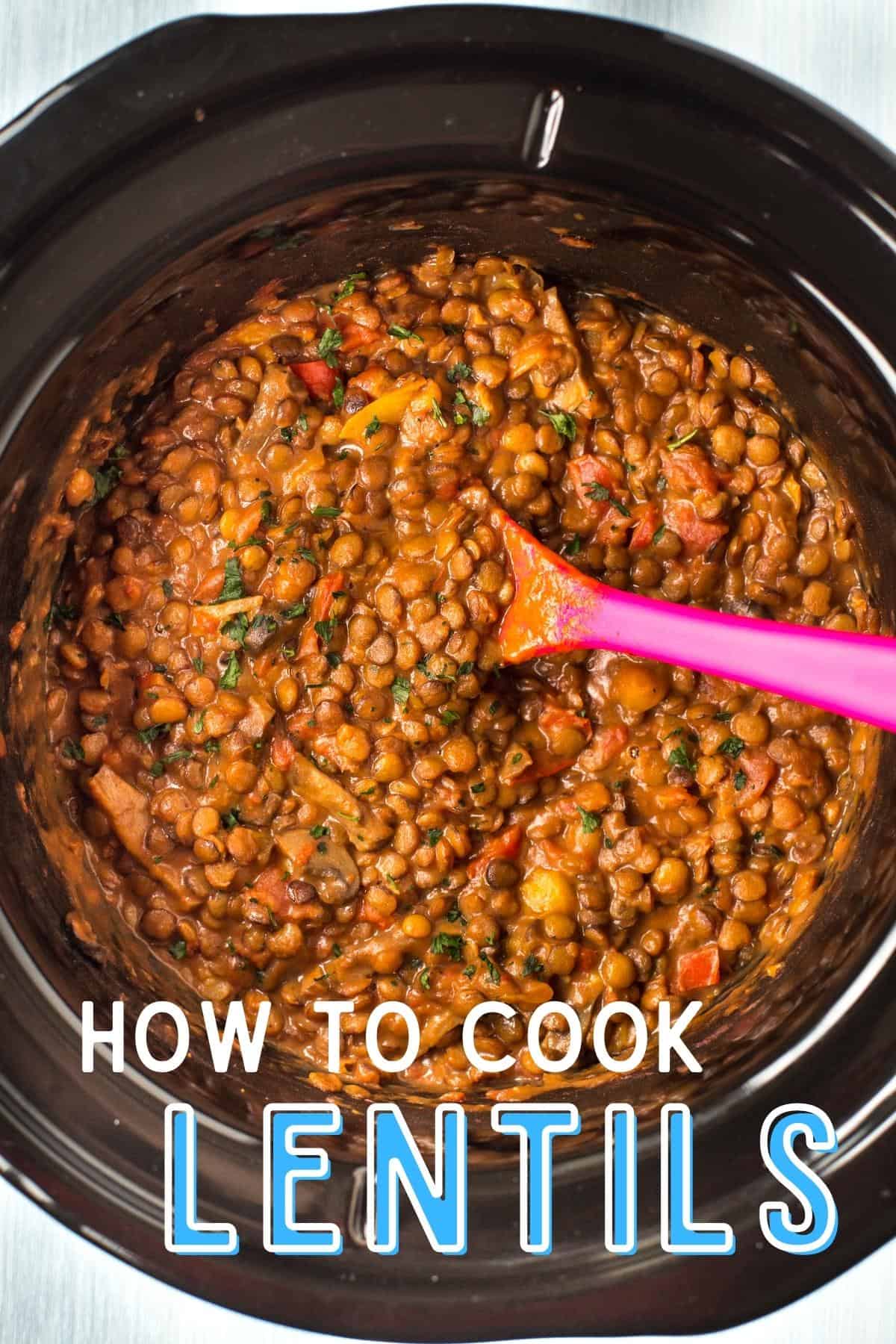
Ahhh, lentils. One of my favourite ingredients in the world – perfect little discs that can be used in a million different ways (and that’s no exaggeration!). They’re one of those things that I always keep in the kitchen cupboards, ready for an easy, healthy, budget-friendly dinner. If you’ve ever wondered how to cook lentils, read on to find out!
First, you need to decide which type of lentils you’re going to cook. I have a different blog post all about the different types of lentils, and what sorts of things they’re good for, so if you’re unsure, start there.
Once you’ve chosen your lentils, it’s time to get cooking!
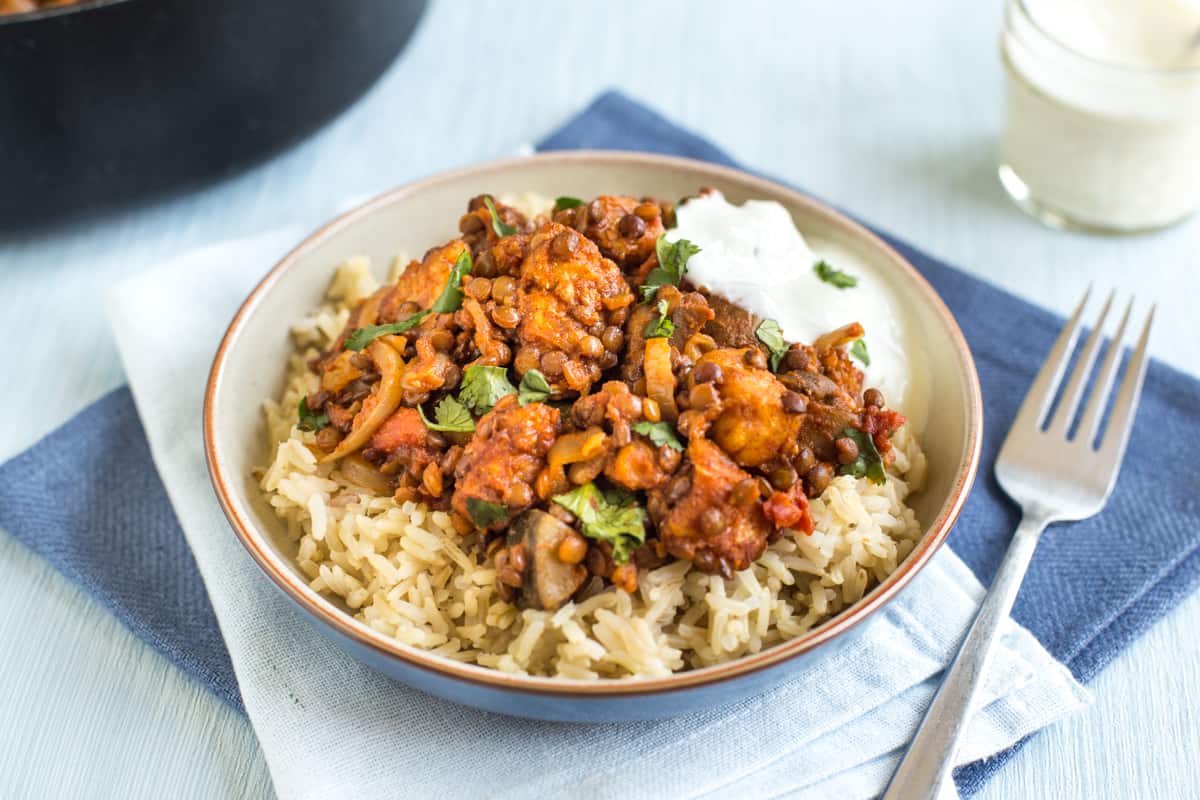
How to cook lentils
Cooking lentils is seriously simple. In (very) short:
- Pick over the lentils
- Boil the lentils
- Drain the lentils (sometimes…)
…then eat the lentils!!
It’s really not rocket science – once you’ve done it a few times, you’ll be a lentil expert! And there are plenty of different ways you can get some extra flavour into your cooked lentils, too.
So without further ado, here are a few more details about how to cook lentils, which will give you the tastiest lentils you’ve ever made – ready to be used in any number of ways!
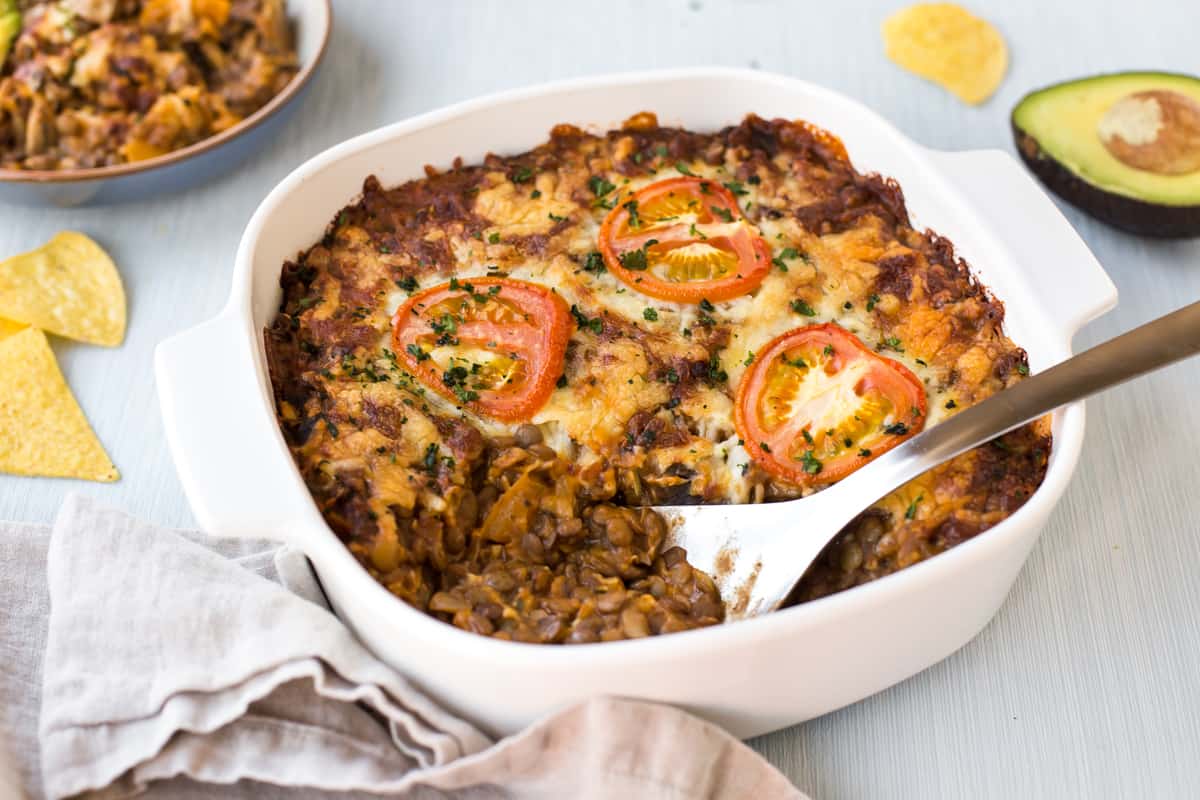
Do lentils need to be soaked?
Nope! Unlike lots of other dried pulses (such as some dried beans), lentils don’t need to be soaked before cooking. This means they’re really quick and easy to use – you can decide you want to cook lentils when you’re already ready to start cooking, and they can be ready to eat not long after. Perfect for a quick and healthy meal.
Some people do choose to soak their lentils anyway, as it can make them cook a bit more quickly, and may also make the lentils easier to digest – but unless you find that lentils don’t always agree with your stomach, I personally wouldn’t bother.
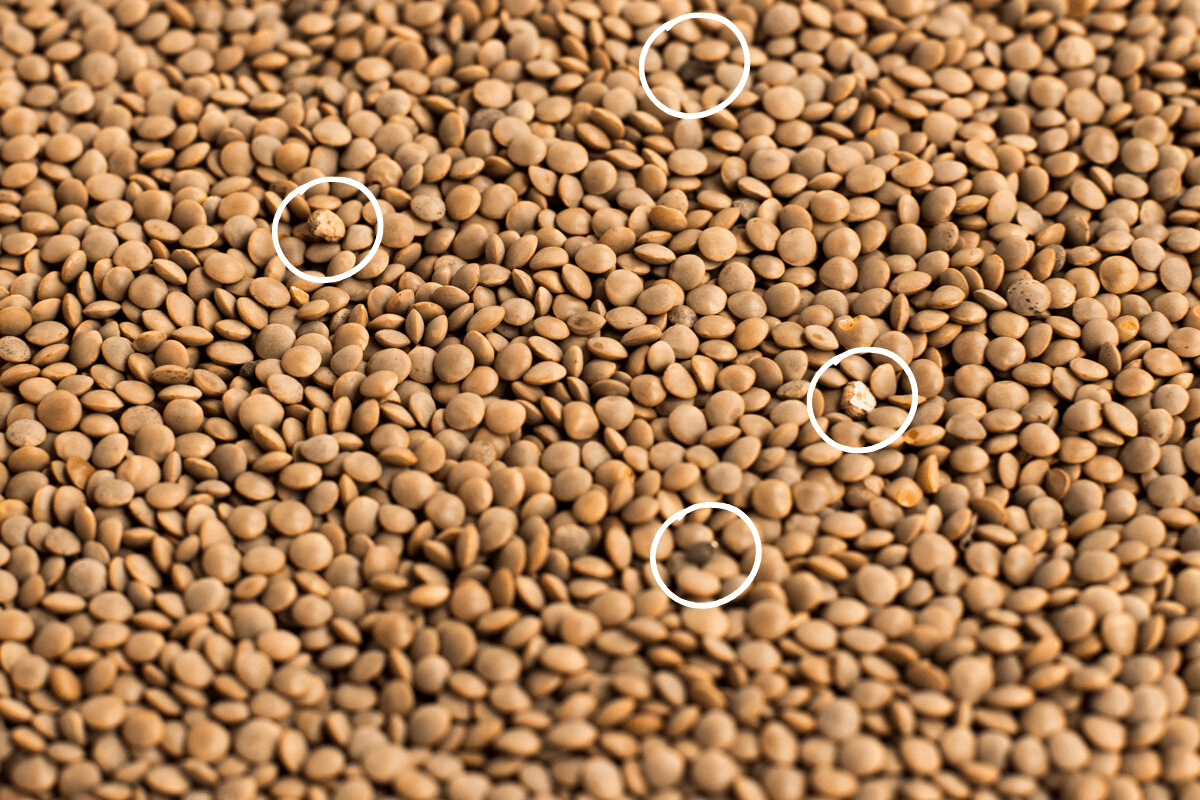
Step 1: Pick over your lentils
One thing I do usually do before cooking lentils is to give them a quick picking over, to remove any non-lentil bits that have found their way into the bag. It doesn’t need to take long – just a quick scan through them after you’ve tipped them into the pan is fine.
I don’t usually bother doing this with red lentils, which I never seem to have an issue with – but with brown and green lentils, I do find it’s worth spending the extra minute or so to remove anything that shouldn’t be there.
I have occasionally found tiny lentil flowers, weird looking lentils, little seed pods, and even tiny stones in amongst the dried lentils in the packet. It’s inevitable when the lentils are being picked from lentil plants! I’ve circled a few non-lentils in the photo above.
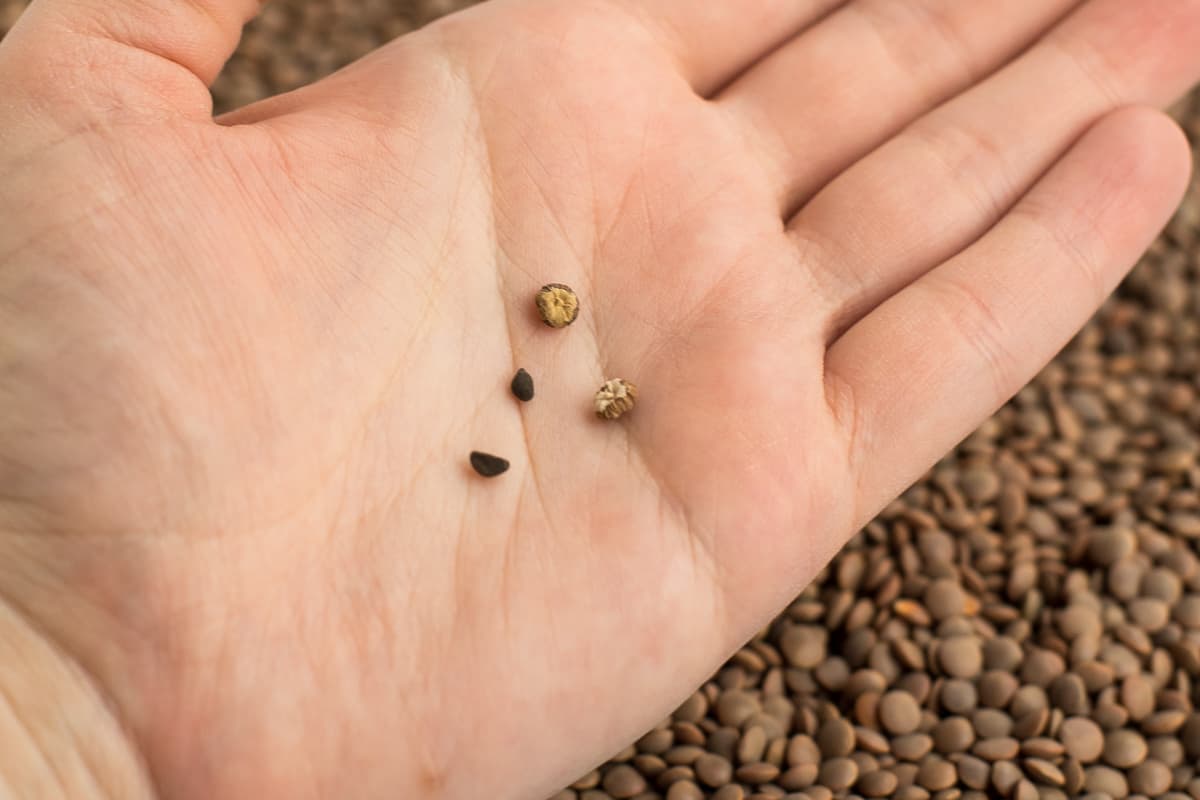
Step 2: Boil your lentils
Lentils need to be boiled in water to soften them up and make them edible.
Just place the dried lentils in a saucepan, and cover with plenty of water (or vegetable stock, for extra flavour). Bring them to a simmer, and allow them to cook until soft. The exact timings will depend on which colour of lentils you’re using – check the packet for guidance.
Step 3: Drain your lentils (sometimes!)
When the lentils are soft, drain away any excess water with a sieve or colander, and use them in your recipe. This method works with any type of lentils.
Alternatively, with red lentils in particular, I’ll often continue cooking them, stirring regularly, until any excess water has been absorbed or boiled off, rather than draining the water. This will give a wetter end result, but if you’re making something like dal or lentil curry, it works really well.
Can you cook lentils in soup?
If you don’t want to cook your lentils on their own, you can just throw a handful straight into a soup, stew, etc. – you don’t need to cook them separately, as long as there’s plenty of liquid to soften them up. Red lentil soup is my favourite, as it becomes so creamy and luxurious.
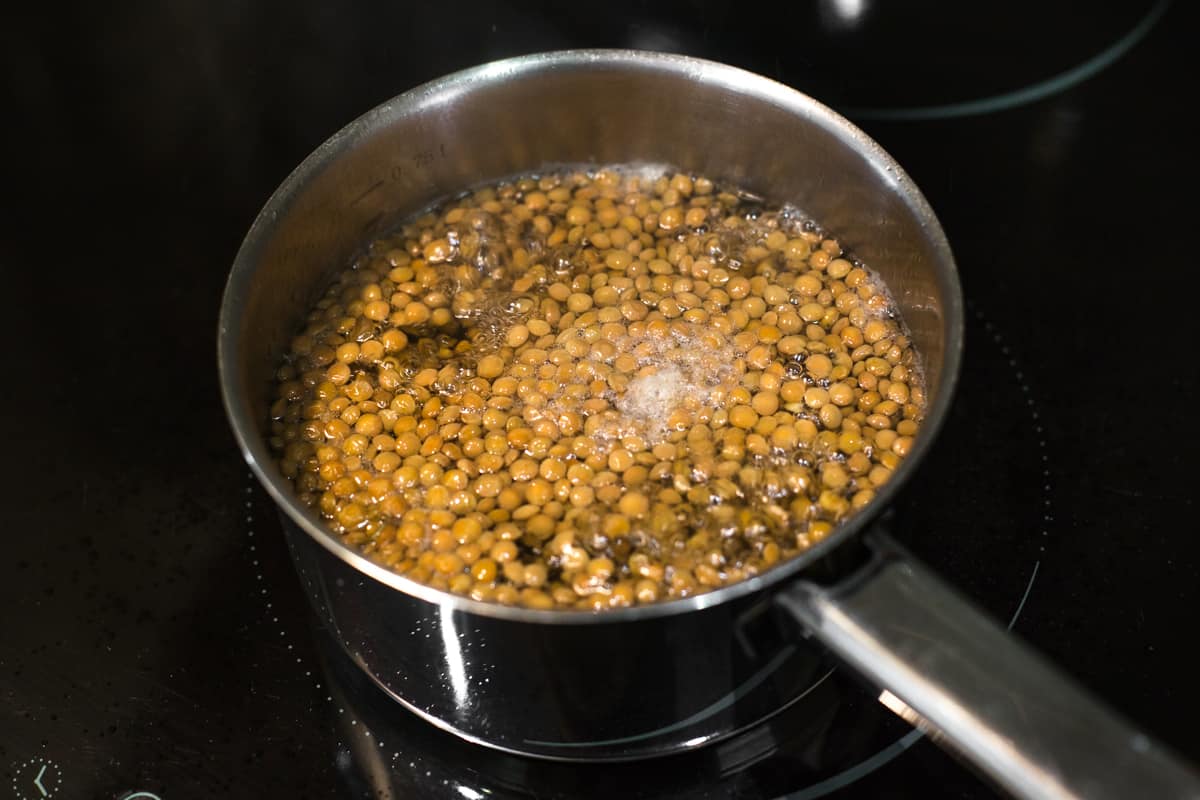
How long do lentils take to cook?
Cooking time will depend on which type of lentil you’re using, and how you’d like them to be cooked.
Red lentils cook the most quickly, in just 15-20 minutes. A slightly shorter cooking time will help them to keep their shape, while a longer cooking time will cause them to start breaking down – which is brilliant for a creamy dal or lentil soup.
Brown and green lentils take a little longer to cook – more like 30-40 minutes. They tend to hold their shape even when they’re soft, and are great for making things like vegetarian sausage rolls or lentil loaves.

How do you know when lentils are cooked?
The best way to check whether lentils are cooked is simply to taste them.
Fish a couple of lentils out of the pan with a fork, and give them a taste. There shouldn’t be any crunch – they should be completely tender.
Sometimes, you’ll want to cook your lentils for longer than is really necessary, as it can help them to break down and become beautifully creamy – like in this tarka dal.
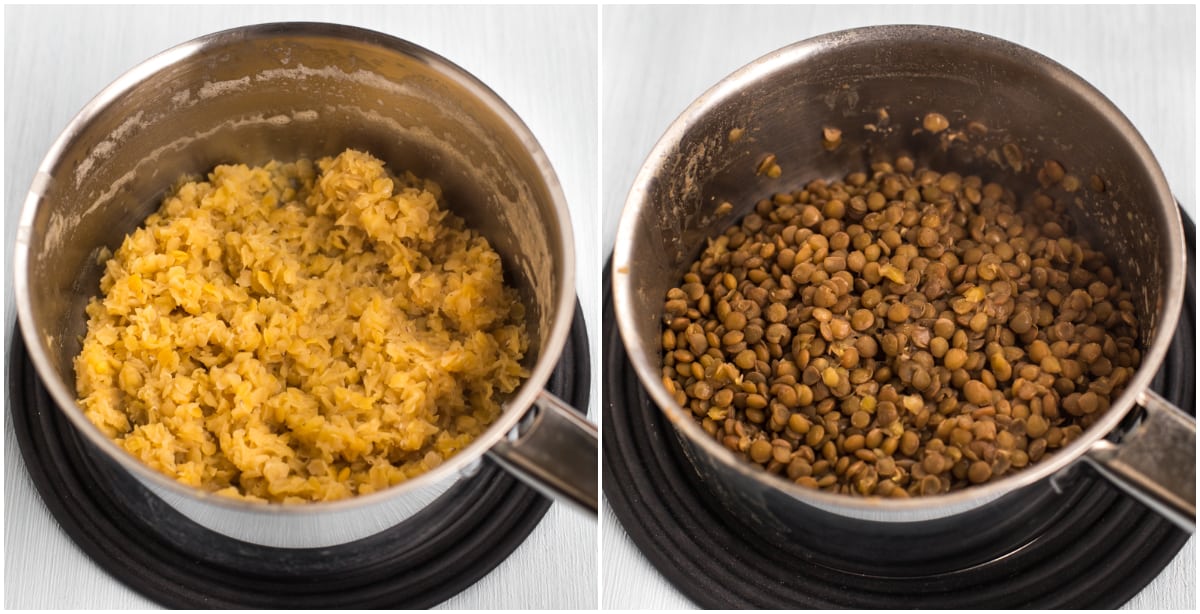
How can I add flavour to boiled lentils?
A lot of the time, you’ll be using your cooked lentils within a recipe that already has plenty of other flavours going on – in a lentil stew, for example – so it shouldn’t matter if the lentils are just boiled simply in water.
But if you do want to get some extra flavour into your lentils, if you’re serving them on their own, you can boil them in vegetable stock instead of plain water – they’ll soak up all the flavour of the stock as they cook. This is what I do if I’m scattering the lentils over a salad, or using them as a simple side dish.
You can also add extra ingredients to the water to infuse into the lentils – a bay leaf or two, a couple of chunks of onion, some whole garlic cloves, etc. You can then remove these ingredients from the lentils once they’re cooked.
Or, you can start by sautéing some onion and garlic in the pan, then boiling the lentils straight on top.
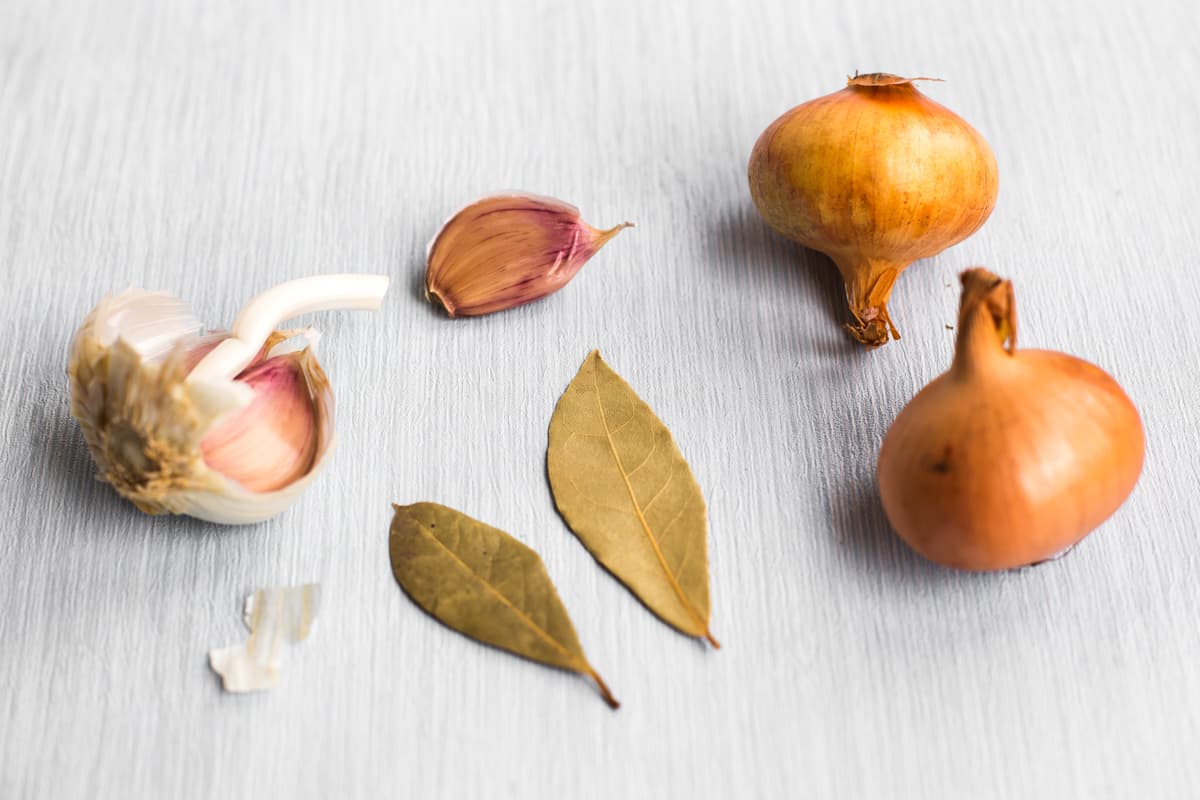
How to use lentils
If I’ve inspired you to get cooking with lentils, check out my bumper collection of vegetarian lentil recipes! The collection really does show just how versatile lentils can be – it includes everything from lentil curries and stews, to burgers and bakes, and even lentil tortillas!
What’s your favourite way to use lentils?


Hi Becca
Thankyou so much for this saved as a short cut ✂️ on my phone
It’s so clear and explains things very well .
Going to enjoy cooking some of your food ideas too
Thanks Susan, glad you’ve found this useful! :)